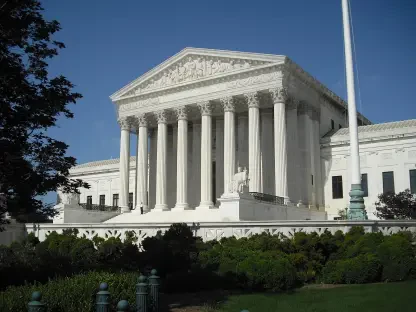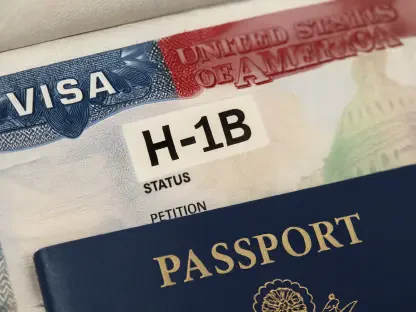The State of Alaska has been wrestling with chronic fiscal challenges for over a decade, and despite various short-term measures to manage budget shortfalls, the state continues to edge deeper into a “fiscal sinkhole.” Alaska’s budget deficits have persisted, prompting a need for significant changes to stabilize its financial situation. This article examines these persistent budget deficits and explores sustainable revenue solutions that could help address these ongoing fiscal problems.
The Fiscal Sinkhole: A Decade of Budget Deficits
Beginning in the early 2010s, Alaska initially sought to address its fiscal deficit by drawing down its Statutory Budget Reserve (SBR). When those funds were depleted, the state turned to the Constitutional Budget Reserve (CBR) for financial relief. However, by 2017, Alaska had to rely heavily on withholding and diverting Permanent Fund Dividends (PFDs)—a move University of Alaska Anchorage’s Professor Matthew Berman refers to as implicit “taxes” on PFDs. Despite these measures, the fiscal crisis has persisted, with deficits continuing to deepen.
In an effort to stabilize the financial situation, the Alaska Senate introduced SB 107, which aimed to allocate 25% of the annual percent-of-market-value (POMV) draw from the Permanent Fund earnings reserve to PFDs, while channeling the remaining 75% to the unrestricted general fund. This proposed bill was intended to signal a commitment to fiscal discipline. However, the House Ways and Means Committee modified the bill to a 50/50 POMV split. This amendment was part of a broader fiscal package that included a less regressive, ultra-broad-based sales tax. Unfortunately, the amended proposal did not pass in the House, and the division created by SB 107 indicated that even if passed, it might not have resulted in a long-term solution.
The legislative impasse highlighted deeper, systemic issues in Alaska’s fiscal policies. Despite attempts to patch budget holes through resource reallocation and short-term solutions, the underlying structural deficit remained unchanged. This ongoing crisis has necessitated taking a hard look at more sustainable, long-term revenue structures.
Legislative Finance Division’s Budget Overview
Looking ahead, the Legislative Finance Division’s “Overview” of the proposed budget highlighted that even with a 75/25 PFD appropriation, Alaska would still face substantial deficits, necessitating at least $197 million more annually by FY26 to maintain existing state services. This projection underscored the significant fiscal challenges on the horizon, compounded by additional spending pressures from various advocacy groups seeking increased funding.
Senator and Finance Committee Co-Chair Lyman Hoffman echoed similar concerns, underscoring the pressing need for the Legislature to explore new avenues for revenue generation to achieve its budgetary goals. This perspective reflects a growing consensus within parts of the Legislature on the crucial importance of revising revenue strategies to formulate a balanced budget. Addressing these issues calls for thinking beyond temporary fixes and considering more structural and long-term solutions.
The continuous budget deficits forecasted by the Legislative Finance Division underscore that merely adjusting PFD allocations won’t be sufficient. The financial analysis provided a clear illustration of the state’s impending fiscal pressures, highlighting the need for a comprehensive strategy. Balancing the budget will likely require a multi-faceted approach, incorporating both increases in revenue and potential adjustments in expenditure.
Analyzing State Deficits Under Varying PFD Distribution Models
In order to fully grasp the magnitude of Alaska’s fiscal problem, it is crucial to examine state deficits under different PFD distribution models—statutory PFD, 50/50 PFD split, 25/75 PFD split, and the potential scenario of completely eliminating the PFD. The “zero PFD” approach results in minimal PFD allocations in FY26 and FY27, with total elimination from FY28 onwards. This exploration of various models provides a foundation for considering personal tax alternatives and increasing revenue through adjustments in oil tax policies as viable solutions.
This analysis sheds light on the fiscal implications of the various PFD distribution models, revealing the potential revenue that could be garnered and the deficits that could be closed. By scrutinizing these scenarios, policymakers can better understand the trade-offs and implications of each model, which is paramount for making informed and strategic decisions. The consistent theme is that comprehensive and multifaceted solutions are necessary to mitigate the fiscal crisis effectively.
In addition, examining distribution models helps bring into focus the broader economic and social impacts of each approach. Understanding the implications of these distribution models is essential not just for budget planning but also for evaluating their fairness and effectiveness. Policymakers must carefully weigh the benefits and drawbacks of each approach to formulate a revenue strategy that aligns with both economic efficiency and social equity.
Personal Tax Alternatives and Oil Tax Reforms
Among the various personal tax alternatives considered to raise $1.5 billion in FY26, several options stand out. Firstly, a Federal Adjusted Gross Income (AGI) Tax with a proposed average rate of 4% presents a viable solution. This tax would tap into residents’ income on a broader scale, distributing the tax burden more uniformly across different income levels. Secondly, implementing a Federal Taxable Income Tax at a 5% average rate is another feasible option. A tax focused on taxable income could potentially generate substantial revenue while maintaining progressivity in taxation.
Furthermore, an ultra-broad-based sales tax, similar to the proposal in HB 142 by former Representative Ben Carpenter, is also promising. This approach would require the lowest tax rate due to its expansive tax base, making it a less regressive option. Despite its potential efficacy, the nuances of implementation and the public acceptance of a wide-ranging sales tax would require careful consideration.
Additionally, a “Federal ‘Taxes Paid’” approach can be explored, where state tax would be a percentage of federal income taxes paid. Historically, this method would necessitate a nearly 30% rate to generate the required revenue, making it less practical than other contemporary tax approaches. Nonetheless, its intriguing framework provides an alternative perspective on potential revenue solutions.
By carefully evaluating and potentially implementing these tax alternatives, Alaska could uncover pathways to stabilize its fiscal future. Adapting tax policies to current economic conditions and revenue needs is crucial for the long-term sustainability of state finances.
Oil tax reform options also provide substantial revenue potential. Closing the “Hilcorp Loophole” could generate an additional $110 million annually, and reducing per-barrel oil credits could bring in between $280 million and $560 million annually, depending on the extent of the reductions. This reform follows the Constitutional mandate to optimize state resource revenues and leverages Alaska’s natural resources to bolster the budget.
A Comprehensive, Diversified Revenue Strategy
For more than a decade, the State of Alaska has been grappling with persistent fiscal challenges. Despite deploying numerous short-term strategies to address budget shortfalls, Alaska’s financial situation has only worsened, pushing the state further into a financial “sinkhole.” The prolonged budget deficits signal an urgent need for substantial reform to stabilize Alaska’s economics. This article delves into these enduring budget deficits and investigates sustainable revenue solutions that could provide a long-term remedy for the state’s fiscal woes.
Alaska’s fiscal difficulties have stemmed from a combination of factors, including reliance on oil revenues, fluctuating energy markets, and rising expenditures. The state has tried various quick fixes, such as drawing from savings accounts and implementing temporary budget cuts. However, these measures have proved insufficient, highlighting the need for more enduring solutions.
Potential pathways for achieving a balanced budget involve diversifying revenue sources beyond oil, incorporating new taxes, and managing spending more effectively. By exploring these options, Alaska could chart a course towards financial stability, ensuring that future budget shortfalls are addressed proactively rather than reactively. This exploration not only seeks to handle immediate fiscal problems but also aims to secure a more stable economic future for Alaska’s residents.









